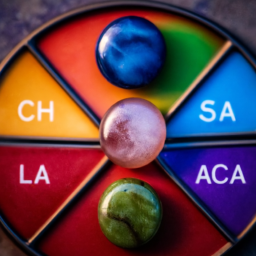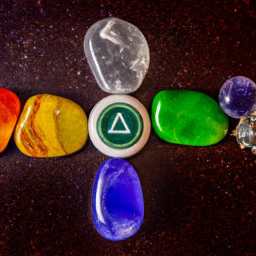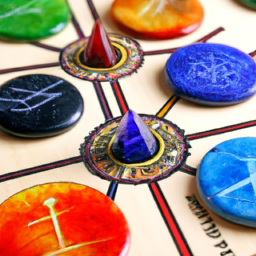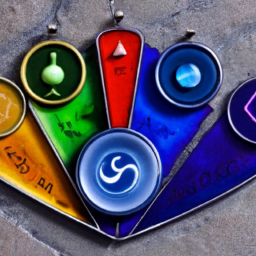Chakra balancing has become a popular practice in recent years as more and more people are becoming aware of the power and importance of energy in their daily lives. The concept of chakras – energy centers within the body – has ancient origins in Indian spiritual traditions, and is gaining popularity in Western cultures as well. One of the most visually appealing ways to incorporate chakra balancing into your daily routine is through the use of chakra balancing images.
Chakra balancing images are representations of the seven main chakras, each associated with a specific color, symbol, and location within the body. These images are not only aesthetically pleasing, but also have a deeper meaning and purpose in helping to balance and align these energy centers.
Let’s take a closer look at each chakra and its corresponding image:
1) Root Chakra: Located at the base of the spine, the root chakra is associated with the color red and is depicted as a four-petaled lotus flower. It represents our sense of security, stability, and connection to the earth.
2) Sacral Chakra: Located below the navel, the sacral chakra is associated with the color orange and is depicted as a six-petaled lotus flower. It represents our creativity, passion, and emotional well-being.
3) Solar Plexus Chakra: Located above the navel, the solar plexus chakra is associated with the color yellow and is depicted as a ten-petaled lotus flower. It represents our personal power, confidence, and willpower.
4) Heart Chakra: Located in the center of the chest, the heart chakra is associated with the color green and is depicted as a twelve-petaled lotus flower. It represents love, compassion, and connection to others.
5) Throat Chakra: Located at the base of the throat, the throat chakra is associated with the color blue and is depicted as a sixteen-petaled lotus flower. It represents communication, self-expression, and speaking your truth.
6) Third Eye Chakra: Located in the center of the forehead, the third eye chakra is associated with the color indigo and is depicted as a two-petaled lotus flower. It represents intuition, wisdom, and spiritual insight.
7) Crown Chakra: Located at the top of the head, the crown chakra is associated with the color violet and is depicted as a thousand-petaled lotus flower. It represents our connection to the divine, spiritual enlightenment, and universal consciousness.
Not only do these chakra balancing images depict the colors and symbols associated with each chakra, but they also serve as tools to focus and activate these energy centers. By meditating on these images, visualizing their corresponding colors and symbols, and placing them in your environment, you can help bring balance and harmony to your chakras.
Aside from the traditional lotus flower depictions, there are also various forms of chakra balancing images that incorporate other elements such as crystals, mandalas, and sacred geometry. These images not only enhance the beauty of the chakras, but also add a deeper layer of meaning and intention to the practice of chakra balancing.
In addition to using chakra balancing images for personal practice, they can also be used in professional settings such as yoga studios, healing centers, and meditation rooms. Seeing these images can enhance the overall atmosphere and facilitate a deeper connection to the chakras during meditation or other energy work.
In conclusion, chakra balancing images are not just pretty pictures to look at, but powerful tools for promoting balance and alignment within the body and mind. Incorporating these images into your daily routine can be a simple and effective way to bring awareness and healing to your chakras. So why not surround yourself with these beautiful and meaningful representations of energy and see the positive impact it can have on your life?





Beautiful!
#GreatFind! A set of these visualizations can be so helpful for daily practices of meditation and yoga!